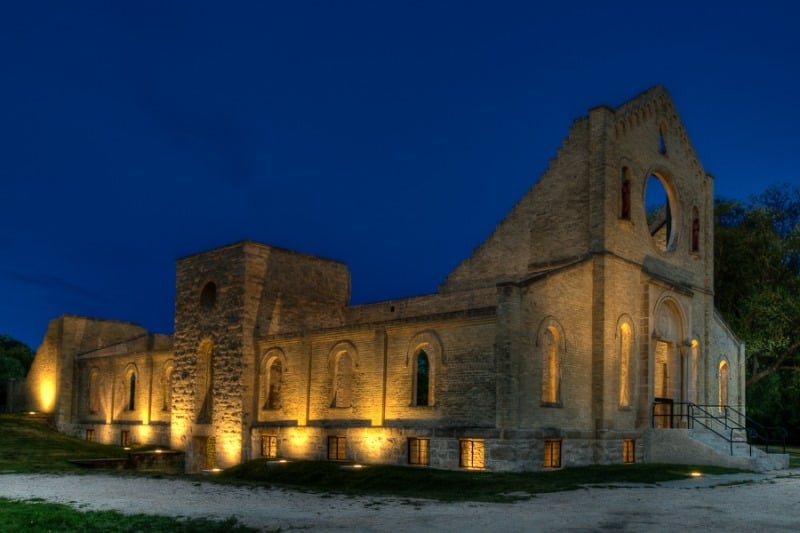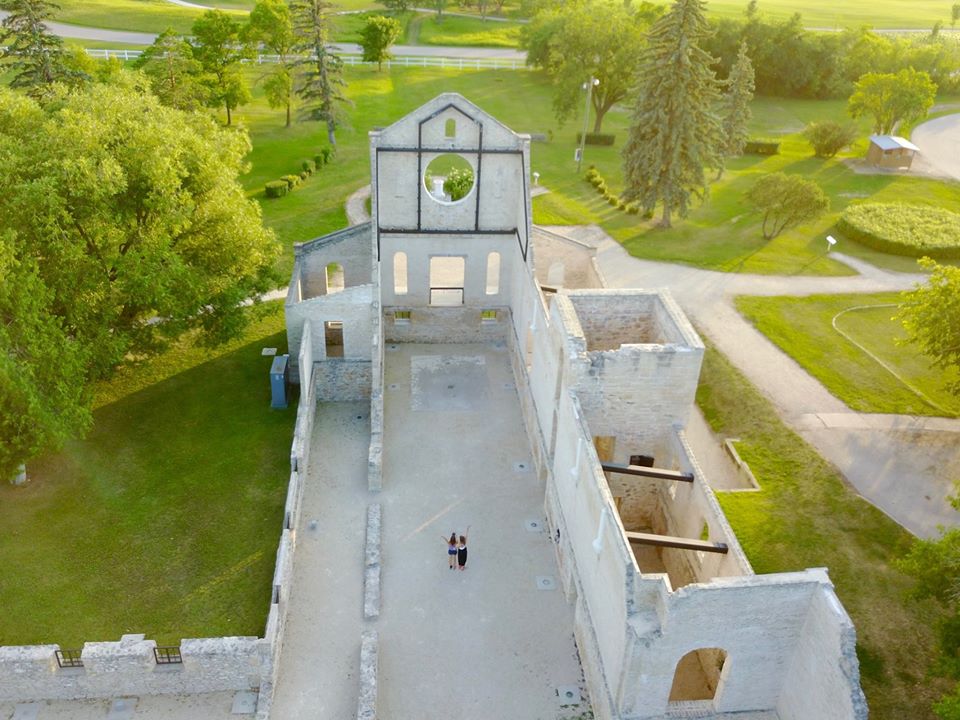Overview

Photo Credit: Clarence Abrams
The focus of the Trappist Monastery Provincial Park is the Ruins of the Trappist Monastery. The lawn, the grounds and the ruins together form the Trappist Monastery Provincial Heritage Park.
Historical background:
The monastery was established in 1892 by Monsignor Ritchot, the parish priest of St. Norbert, and Archbishop Taché of St. Boniface. Five Cistercians of the Trappist Order from the Abbey of Bellefontaine in France were invited to St. Norbert. Their community was called Our Lady of the Prairies. A Romanesque Revival church was constructed in 1903-04 with an attached monastic wing (1905). The Church had simple architecture and minimal ornamentation. The monastic wing held the rooms for the monks, lecture halls, reception and service areas. The monastery was also self-sufficient and had milking barns, stables, a cheese house, apiary, sawmill, and cannery. In 1912, a Trappist Monastery Guest House was also built to welcome visitors.
The Trappist monks led a quiet life of prayer and contemplation set by the Rule of St. Benedict on this secluded region along the La Salle River. Later as urban life encroached the region, in 1978 the Trappists moved to a site near Holland, Manitoba to protect their contemplative life. Five years later in 1983, fire gutted the vacated church and residential wing.
The Ruins was designated as a provincial heritage site in 1988.
Things to Do at Trappist Monastery Provincial Heritage Park
See the Ruins of the Trappist Monastery

Photo Credit: Be My Travel Muse
The brick and stone ruins of the old Trappist Monastery Church is the main attraction of the Site. The Romanesque Revival architecture style of the monastery can be understood from the ruins.
Near to the ruins stand the 1912 Trappist Monastery Guest House, also a Provincial Heritage Site. Today it houses St. Norbert Arts Centre. Its architecture resembles the Roman Catholic ecclesiastical architecture prevalent at the time.
Learn the history of St. Norbert
While visiting the Ruins you can learn about the French-Canadian monks known as the Trappists who lived and worked here. Interpretive Tours and historical information about this site are available to visitors.
The ruins also exemplify St. Norbert’s character as an early French-speaking Metis community.
Enjoy Shakespeare’s Drama
Evenings in June, the Ruins come alive with Shakespeare’s drama. This outdoor theatre is performed in the ruins of the Monastery.
Other Activities
The scenic gardens are ideal for meditation and relaxation. Enjoy a picnic on the grounds. If you like bird watching this is a great place to spend time.
Attractions near Trappist Monastery Provincial Heritage Park
St. Norbert Heritage Trail is a multi-use pathway of over 30 km. Connected to the Trans-Canada Trail, the trail will take you to important regions in St. Norbert including the St. Norbert Provincial Park as well as St. Norbert Farmers’ Market– Manitoba’s largest outdoor summer market.
Located just minutes away is the La Barrière Park, a great place for canoeing, fishing, hiking and biking. Visit Paroisse St Norbert.
There is no camping at the park, but Bolton Lake Lodge & Outposts and Golden Links Lodge are within 15 mins drive from the Park.
When to Visit Trappist Monastery Provincial Heritage Park
Year round, all season park.
Tours are available only during summer months.
How to Get to Trappist Monastery Provincial Heritage Park
Leaving Winnipeg, take Hwy. #75 south, travel to St. Norbert, turn right at Rue des Trappistes for approx. 1.5 km (0.9 mi.), left at Rue des Ruines du Monastere.
Email: ParkInterpretation@gov.mb.ca
How much to visit Trappist Monastery Provincial Heritage Park


